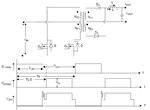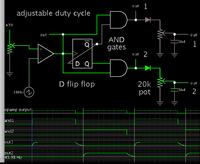jonny200903
Newbie level 3
Hi Sir,
In the topology of push-pull, when the swith is off, there is a spike created by the leakage inductance at primary. My question is which path to absorb this spike in standard push-pull circuit.
Another question is: when one of primary switch is on, there is magnetizing current due to the magnetization inductance of the primary, how to reset it to avoid the magnetic saturation. Thanks!
In the topology of push-pull, when the swith is off, there is a spike created by the leakage inductance at primary. My question is which path to absorb this spike in standard push-pull circuit.
Another question is: when one of primary switch is on, there is magnetizing current due to the magnetization inductance of the primary, how to reset it to avoid the magnetic saturation. Thanks!

